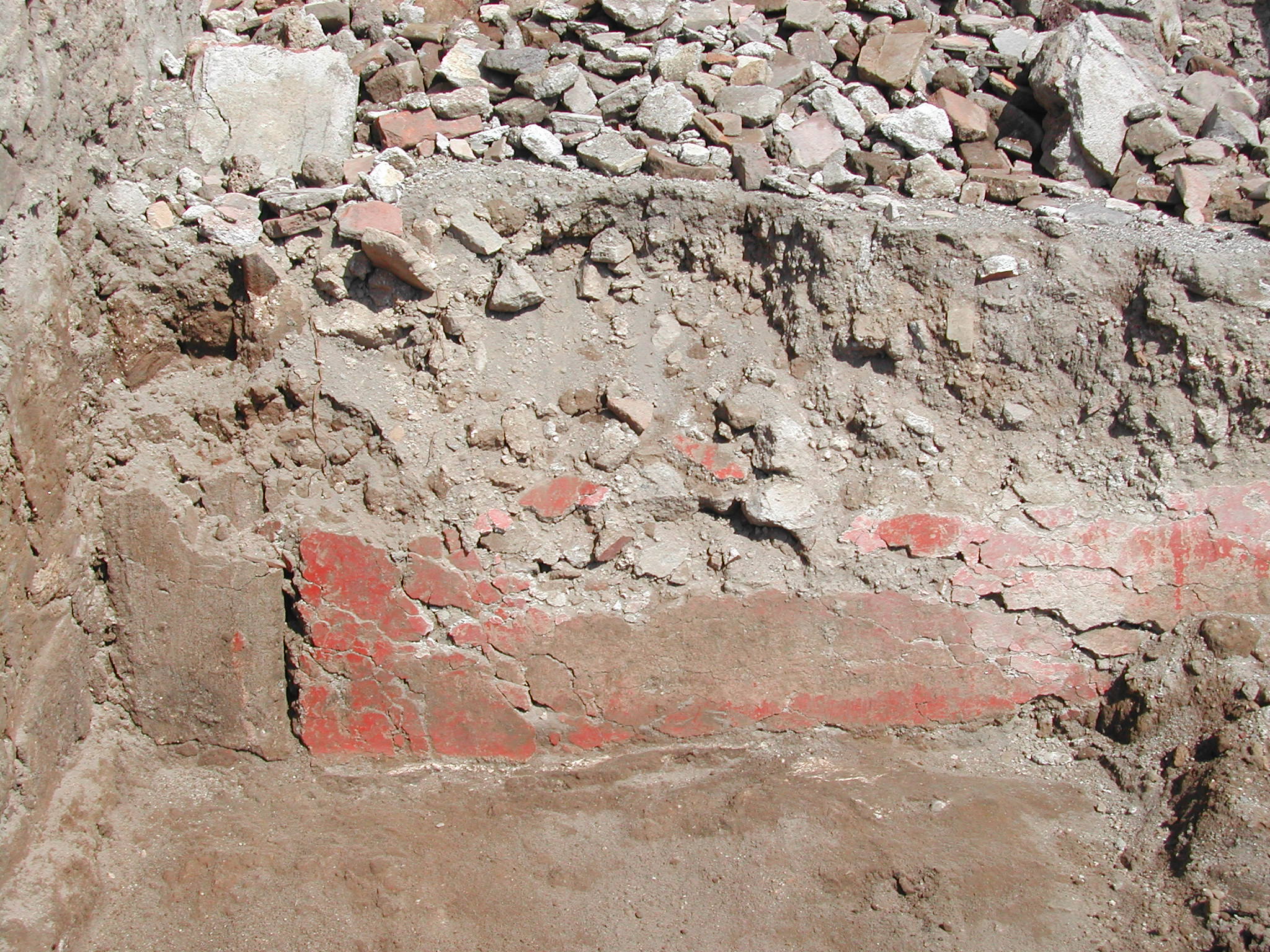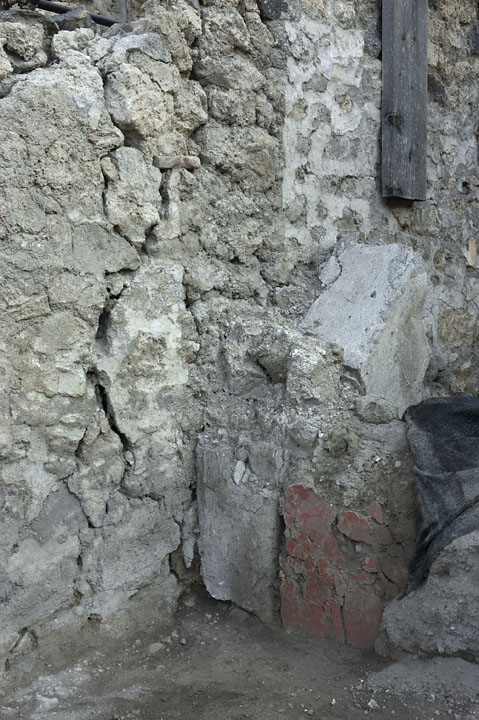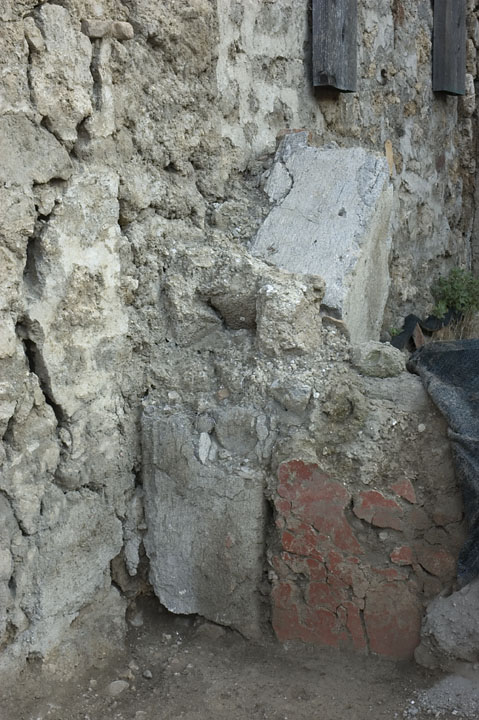Pluteus
Description
Henrik Boman & Monika Nilsson
The viridarium is surrounded by an L-shaped portico with two columns and a pilaster. A low pluteus, today in fragmentary condition, runs intercolumnia.
The northern oven had been built against the painted pluteus and the mass of the oven protected this part of the plaster on the pluteus facing the ambulatory when the room was hit by bombs in 1943. The pluteus was painted with thin white lines on red ground, while the columns and pilaster were only coated with rough greyish white plaster.
On the southern interior, facing the small garden and the bench, is a decoration with yellow and red sections in between segments of horizontal red bands. The remains are in bad condition and the design of the decoration cannot be established.
The pilaster at the northern end of the pluteus has a greyish white type I plaster and the red-painted pluteus next to it also has type I plaster. However, preserved plaster further to the south and near the corner of the pluteus is identified as type G while the exterior of the southern arm of the pluteus is, again, a type I plaster.
The cocciopesto in the S and W conduits closest to the pluteus bounds to the plaster on the inner side of the pluteus, meaning that they were constructed contemporaneously. The two southern conduits and the triangular bench, however, do not bound to each other, meaning that they were presumably constructed on separate occasions.
The viridarium as such - with the earlier painting on the bench, the water conduits and the extra water conduit to the south - suggests multiple rebuilding phases of the rear of the house, all compatible with the arrangements of a small garden for private use. The earlier water conduit might have been the border of the rear open area of the house, so the garden was presumably larger in its early phase. This early phase was possibly contemporaneous with the painting on the northern bench.



